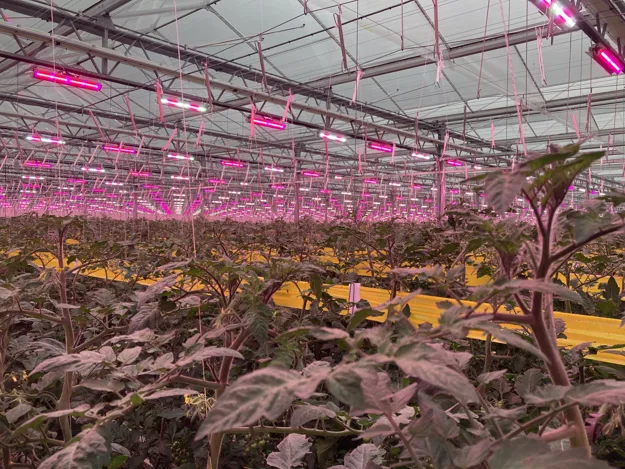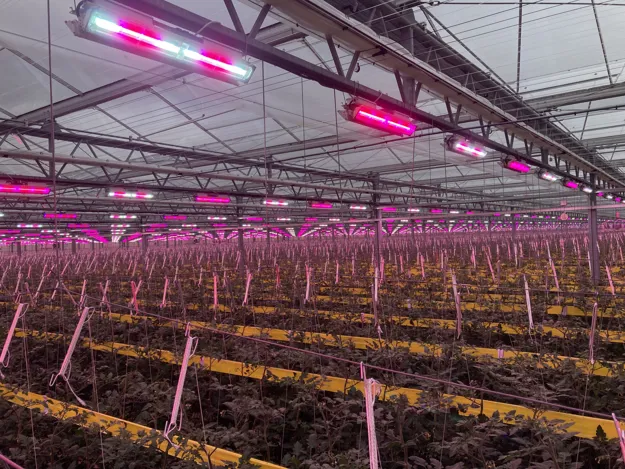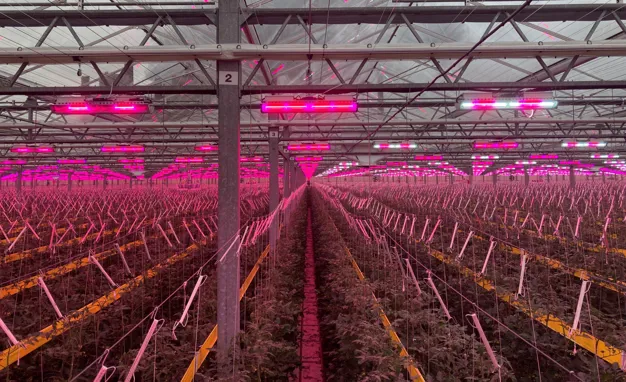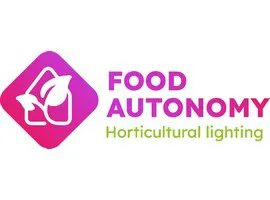Vitarom Neurath GbR, one of Germany’s leading tomato and pepper producers, is battling the same challenges as greenhouse and vertical farm operators everywhere else in Europe: skyrocketing energy prices. Established ten years ago, when the four shareholders of the company teamed up, one of Vitarom’s key ambitions is to supply fresh, local produce to German customers year around. In order to ensure continuous supply and keep their energy costs under control, Vitarom opted to install lamps designed and manufactured by Food Autonomy. These are not only energy-efficient, but are also wireless dimmable, operating on a multi-channel wireless control system.

Switching to LED luminaries was a strategic decision designed to lend a competitive edge to the company, as energy prices in Germany are typically higher than in neighboring Benelux countries. In the first stage of the project, Vitarom installed over 14,000 Linear Toplight LED fixtures in 2020. The lamps delivered the expected results, and the owners decided to continue working with Food Autonomy by ordering a second batch of luminaries with more developed features.
Dimming for cost efficiency
Building on the success of the first phase of the project, Vitarom purchased more than 3,300 Double Toplight Fixtures from Food Autonomy in the second phase of the project. The fixtures equipped with wireless dimming were installed in 2021. “The reason we chose Food Autonomy was that we needed a reliable and flexible partner who adjusts to our needs,” Jana Knodt said.

As a show of Vitarom’s satisfaction with the products and services of Food Autonomy, the company embarked on a third phase of the project involving the installation of more than 6,000 multi-channel double Toplights with wireless dimming. “The dimming feature of the lamp helps us trim our energy bill as we can dim the white light, which is the most energy consuming,” said Jana Knodt, management assistant at Vitarom
Higher degree of flexibility
Dimming is a key feature of the luminaries as it provides a higher degree of flexibility by allowing users to customize their light usage depending on the daylight conditions. “When harvesting in the morning, the pink light not only irritates the eyes but also makes red tomatoes look yellow. The human eye needs the white light, and our plan is to turn on the white light only for the time until it gets light outside, enabling us to customize our use of light in a more efficient manner,” explained Jana Knodt.

Increased efficiency and light uniformity
Dimming provides higher savings due to increased efficiency. When the lamp is dimmed to 50%, its efficiency goes up from 3.4 to 3.8, which is a significant improvement versus the conventional method of switching off 50% of the lamps in a checkerboard layout. Additionally, it allows users to maintain light uniformity, which is not the case when half-light is operated in a checkerboard layout. The solution also allows for an unlimited number of groups to be set up, which can be independently controlled while new lighting installations can be added to the existing control network.
“Energy prices in Germany were a decisive factor in selecting the type of luminaries ordered from Food Autonomy. So while lighting up is a strategic decision, the cost side was a heavy factor. The luminaries provided by Food Autonomy help us maximize energy savings and give us the flexibility to use only the light the plant needs,” noted Jana Knodt.
For more information:
Food Autonomy
www.foodautonomy.org
[email protected]
